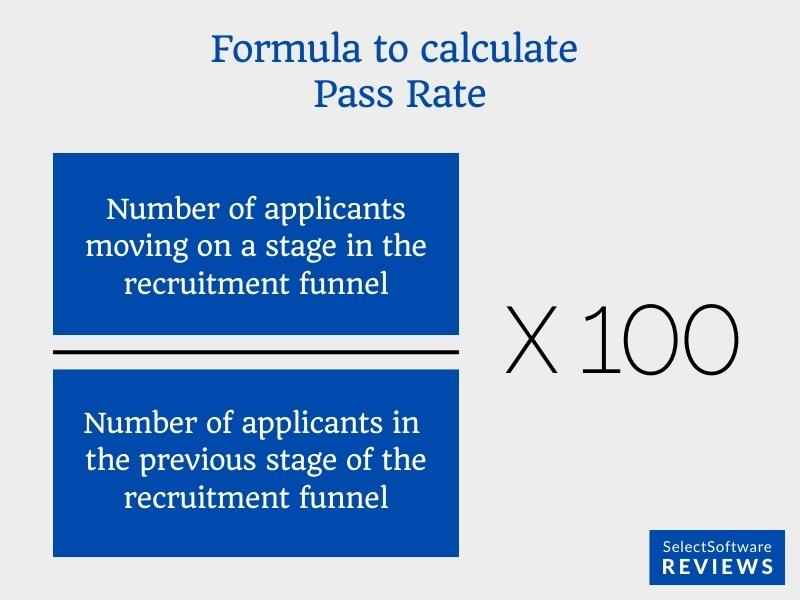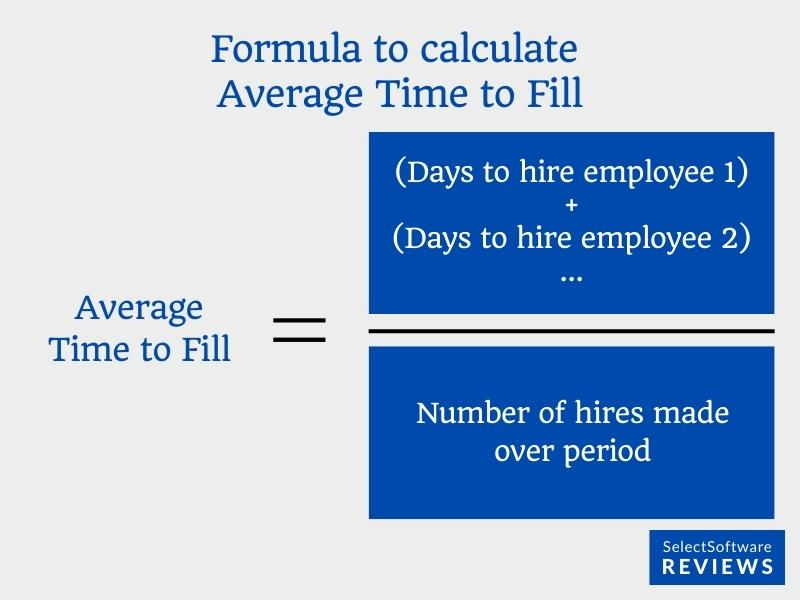A data-driven approach to recruitment can elevate an ordinary recruitment process into one that is efficient, competitive, and enduring. This strategic use of data empowers recruiting teams to make informed decisions, adapt to evolving trends, and ultimately secure the best talent in a rapidly changing landscape.
Developing a customized recruiting strategy should align with each team's distinctive needs and tackle the shared challenges encountered in the hiring journey. In this article, we will explore various elements of data-driven recruitment, from pinpointing key challenges to configuring systems for efficient data collection.
What Is a Recruiting Strategy?
A recruiting strategy describes a recruiting team's approach to attracting and securing top talent in the hiring market. However, the elements of a successful recruiting strategy are nuanced and dynamic. There is no static formula that guarantees success in hiring. Instead, effective recruiting strategies require constant observation, learning, and a willingness to pivot approaches to meet the market's ever-changing demands. Flexibility, adaptability, and a continuous improvement mindset are key attributes in crafting and executing a successful recruiting strategy.
Identifying Your Recruitment Data
When honing in on a successful recruitment strategy, introspection is as important as looking outward. Talent teams must map their journeys to identify pain points, establish data metrics that support a solution, and alter their approach as needed. You need to collect data points throughout your recruitment efforts to obtain data-driven insight.
Here is a two-step plan for determining the type of data you need and collecting enough data points to gain actionable insights.
Step 1: What Are Our Pain Points?
To implement an effective and efficient recruiting strategy, teams must first identify the specific challenges and goals they are addressing. Drafting a short list of pain points and concerns provides a roadmap for tailoring the recruiting strategy to meet these unique needs. Unsurprisingly, many recruiting teams share common pain points in their operations.
Common struggles
- Sourcing quality/ideal candidates
- Candidate engagement in the hiring process
- Lengthy and cumbersome interview processes
- Competing offers
The list of recruiting challenges can seem endless, but it's crucial to identify key themes for data-driven troubleshooting.
Each question or challenge faced in recruiting often has a corresponding data point that can be leveraged for analysis and improvement. A data-driven approach allows teams to move past surface-level assumptions and address issues with precision, using measurable insights to troubleshoot efficiently and effectively.
Step 2: Setting Up for Success
With specific questions in mind, the next step in a data-driven strategy involves configuring your systems to collect the relevant data.
Most modern application tracking systems (ATS) are equipped with recruitment tools and functions that collect and report on these various data points. If your team does not have a reliable ATS in use, implementing one should be the first step.
Assuming that your team does have a functioning and robust ATS in place, it will be critical to become familiar with the system's ins and outs and understand how to make it work for you and your team.
ATS configuration and customization will pave the way to a tailored, data-driven recruiting strategy. However, the evaluated data is only as good as the collected data. Every candidate a recruiting team engages has many data points to offer and contribute to this process. If it's not asked, then it can’t be tracked.

Application Configuration for Capturing Recruitment Data
The job application is often the first point of introduction between an eager candidate and the employer. If a candidate is not sourced directly, they will likely reach out to a company via the application portal.
It's standard practice for candidates to provide contact information and a resume when they apply for a job, but why does it have to stop there? Dedicated application questions can collect valuable data to help solve the plethora of issues mentioned above. Data collected in the application phase is relevant when addressing sources of hire, candidate demographics, and overall candidate quality.
Application questions to consider:
- How did you hear about this opportunity?
- If you attended a university, please list which one
- What made you consider applying for this role?
- What are your salary expectations?
- Do you have experience with the (particular skill set) required for this role?
Capturing candidate data at this initial stage has the advantage of including the entire applicant pool, not just those who progress to later interview stages. Questions of this nature can reveal whether most applications originate from your company’s website or external platforms like LinkedIn or Indeed, for example. These types of questions may also indicate where employer branding visibility is highest. It also provides data on which recruitment marketing channels yield results for your company (job postings, career pages, job boards, social media, etc.)
High rates of referral hires from current employees may support the proposal for an incentive-based employee referral program. Additionally, inquiries about salary expectations can yield valuable insights into how professionals in the field compare to the posted salary ranges for a given role.
While application data does not complete a recruiting strategy on its own, it serves as a foundational element in determining how a recruiting team engages with the market. It has the capacity to validate or question the expectations set by company needs for the applicable role. Moreover, data collection of this nature has the potential to uncover unexplored areas of opportunity that the team are yet to consider.
EEOC Questions
Many Applicant Tracking Systems (ATS) have the capability to incorporate questions related to Equal Employment Opportunity Commission (EEOC) guidelines. This information can be gathered and internally reviewed.
EEOC questions typically gather candidate data related to demographics, encompassing gender identity, racial/ethnic background, sexual orientation, disabilities, and veteran status. Reporting on these fields, however, differs from other application-based data points. EEOC reports present aggregate information to prevent candidate discrimination, representing larger sample sizes rather than individual data points.
As EEOC metrics are reported at an organizational level, they provide valuable insights into trends or patterns within the broader hiring process. In many companies, promoting diversity is a central initiative, and analyzing the demographic breakdown of the candidate pool enables corrective measures and strategic DEI recruitment initiatives.
Understanding whether a diverse and inclusive talent pool is present or not guides proactive steps. If the metrics indicate a lack of diversity, they offer clear insights to take the initiative and reach new demographics when advertising for roles.
Building a Data-Oriented Hiring Pipeline
Interview Stages
Real data collection begins once candidates pass from the application stage to the interview process. Application data acts as a foundation to identify candidate demographics, but interview stage data offers insight into how hiring is playing out.
Pass-through rates serve as an intriguing and insightful reporting metric, opening up the recruitment process to further inspection. These rates highlight the percentage of potential candidates transitioning from one stage to the next, often conveying a narrative. For instance, a high pass-through rate from the application stage to the recruiter screening stages could suggest a more lenient screening process, considering a diverse range of candidates.
While beneficial for roles with flexible job descriptions, it might also indicate a need for more discretion in screening to prevent the influx of unqualified candidates into the pipeline. It's worth noting that candidate pass-through rates can offer insights into the candidate pool as well as the effectiveness and discernment of the hiring team.

A prevalent challenge in the hiring process often stems from misaligned expectations between recruiters and hiring teams.
While a recruiter may diligently identify and present the best candidates for the hiring team's consideration, a low pass-through rate from the hiring manager's screen to the following stages signals a disparity in expectations. A healthy pipeline should exhibit a balance between rejections and progress to the next stage.
An imbalance, however, serves as a clear indicator that expectations within the process are not aligned with the current hiring strategy. Addressing these discrepancies is crucial in supporting an effective and streamlined recruitment process.
Time in Stage
Time becomes a critical factor in the realm of recruiting, underscoring the need to monitor it closely. Both candidates and hiring teams are constantly under time constraints, whether due to competing priorities or alternative job opportunities.
A protracted and prolonged recruiting process heightens the risk of losing high-quality candidates, a particularly impactful concern with high-level, specialized candidates. 60% of job seekers are put off by time-consuming recruitment processes. The implication is clear: inefficiencies in the hiring process waste time and jeopardize the potential to employ valuable talent. Drop-off rates incentivize companies to create a more condensed and candidate-centric recruiting experience.
When applicants apply for a role but receive no response from hiring teams for several weeks or even months, recruiting teams risk creating a negative impression and diminishing their interest in the company. This situation might signal the need for dedicated resources, such as a sourcing specialist, to assist with timely application reviews and to ensure that quality candidates are not overlooked. Alternatively, prolonged time spent in other stages may highlight accountability issues within the hiring teams.
Drawing from my experience as a recruiter, one of the most frustrating scenarios is having highly qualified candidates ready for an offer only to be held back by a hesitating hiring team. Similar to the application phase, candidates lingering in one stage for an extended period often lose momentum and interest.
Analyzing the data can reveal whether this is a recurring trend. If it is, there are unmistakable indicators to address the issue promptly. It becomes essential for either recruiters or their hiring teams to take decisive action, ensuring a smoother and more responsive hiring process to keep the candidate pipeline active and engaged.
Time to Hire
An additional, more comprehensive data point centers around the time to hire per role. This metric provides recruiting teams with a holistic view, enabling the evaluation of hiring practices throughout the entire business and better resource allocation.
Time to hire assesses the duration from when an employee applies to the moment they receive an offer letter. To reiterate, time is a critical factor for all parties involved and should be treated with utmost importance. In the context of the tech sector, software engineers are currently facing unparalleled levels of demand. This heightened demand emphasizes the urgency in the hiring process, as every moment spent in interviews could bring a competitor closer to extending an offer to your preferred candidate. The competitive landscape demands a swift and efficient hiring process to secure top talent in high-demand fields such as software engineering.

Hiring strategies cannot adhere to a one-size-fits-all approach when transitioning from one role to another. Particularly in the case of strategic executive roles, the recruitment process often spans several months due to the meticulous sourcing and recruiting efforts involved.
When selecting a new chief or senior leadership member, extensive time is dedicated to assessing company culture fit, expectations, and strategies with just one candidate. Consequently, time-to-hire metrics for such roles may extend up to six months. On the other hand, more junior and entry-level positions may be filled within 30 days or even less due to the nature and expectations of the role.
Recognizing the diverse timing and expectations associated with various roles allows recruiting leaders to allocate tasks and resources effectively within their team, facilitating an efficient and role-specific recruiting strategy.
Data Gathered from Rejected Job Offers
Though not always a comfortable conversation, recruiters who ask, "Why are you rejecting our offer?" when confronted with a rejection may gain valuable insights that unveil measurable trends. This proactive approach encourages a culture of continuous improvement and provides concrete information that can be used to refine and enhance the recruitment strategy over time.
Frequent offer rejections can indicate a poor recruiting experience, sub-par compensation, or a misalignment in culture fit. Regardless of the specific reason, each candidate's rejection represents an opportunity to refine and improve future acceptance rates.
Persistent feedback indicating concerns about low compensation could signal that pay bands are outdated or miscalculated for a particular role. While recruiting teams may not directly establish these bands or budgets, they possess the data to inform stakeholders about compensation, enabling them to make impactful adjustments and enhance the overall effectiveness of the hiring process.
Considerable time and resources are dedicated to each candidate throughout the interview process, and as they advance through each stage, these investments escalate. Gaining insights into why candidates might decline an offer can help avoid the expenditure of time on interviewing candidates who ultimately won't join the company. Moreover, if a pattern emerges where candidates consistently decline offers, it could potentially indicate broader issues related to employee retention.
End-to-End Evaluation
Tying it all Together
Every data point discussed so far serves as a key ingredient in the larger recipe of an effective recruiting strategy. This holistic approach ensures that the recruitment strategy is informed by data and precisely tailored to address specific issues and improve overall efficiency.
Undoubtedly, recruiting teams will find themselves tasked with unforeseen challenges, spanning from last-minute hiring surges to strategic hires with entirely new job descriptions. While not every scenario can be pre-planned with a ready-made solution, there's significant value in learning from and documenting past experiences to better prepare for future strategies.
Is it Working?
Success is defined differently for each organization, but every talent team leverages data to determine whether or not their efforts are leading to desired outcomes.
Evaluating a recruiting strategy's performance is best accomplished by combining Applicant Tracking System (ATS) data with Human Resources Information System (HRIS) data and other HR team metric reports. Analyzing a few key people metrics in conjunction can shed light on the strategy's overall effectiveness, providing valuable insights into how well it aligns with recruitment goals and contributes to the success of talent acquisition initiatives.
You’ll want to keep close tabs on the following reports as a baseline.
New Hire Count
A straightforward yet essential indicator is the number of candidates hired with successful onboarding within a specified timeframe. This metric becomes most effective when integrated with a workforce model or hiring plan explicitly outlining the anticipated headcount to be hired. “How many people did we want to recruit and onboard? How did reality compare to this goal?”
While factors like recruiter bandwidth, the complexity of hires, and other variables contribute to this metric, it provides a solid baseline for initiating the evaluation process. By comparing the projected and actual numbers, organizations can evaluate the effectiveness of their recruiting efforts and make informed adjustments to align with workforce planning.
Time in Role
While successfully bringing in new hires is an accomplishment in itself, it is also critical to understand how long new hires stay with the company.
Nurtured, supported, and appropriately challenged employees who build tenure become invaluable assets, bringing a wealth of company expertise and a refined skill set developed over time in their roles. Tenured employees also represent a successful investment, considering the resources required for hiring and training. Time in role and turnover rates, easily obtained from an established HRIS, become a straightforward metric for candidate longevity.
When paired with employee application data (source of hire, university attendance, previous companies), this tenure data can unveil trends that help identify successful sourcing strategies and contribute to the ongoing enhancement of recruitment practices.
Performance Reviews
Indeed, one of the most tangible indicators for evaluating successful hires is through performance reviews. When a recruiting team consistently brings in top performers, examining and analyzing the sources of those high-performing individuals becomes a crucial signal for assessing the effectiveness of a recruiting strategy.
Identifying top performers in your organization can offer valuable insights into the key demographics and qualities of the right candidate that contribute to a successful hire.
A Tailored Approach
The path toward a customized and optimized data-driven recruitment strategy involves identifying current pain points in the recruitment process, establishing strong data practices, and making well-informed decisions based on data trends and metrics. This approach ensures continuous improvement and adaptability, enabling the recruiting team to stay competitive in attracting and retaining the right talent.
Ultimately, a successful recruiting strategy is not a fixed formula but a dynamic and evolving process that learns from past experiences and strategically plans for the future. As talent teams navigate diverse challenges, the data-driven approach serves as a compass, guiding them toward achieving their goals. Recruiting teams can stay agile, responsive, and effective in attracting and retaining top talent by continuously analyzing data, adapting to changing circumstances, and incorporating lessons learned.




















